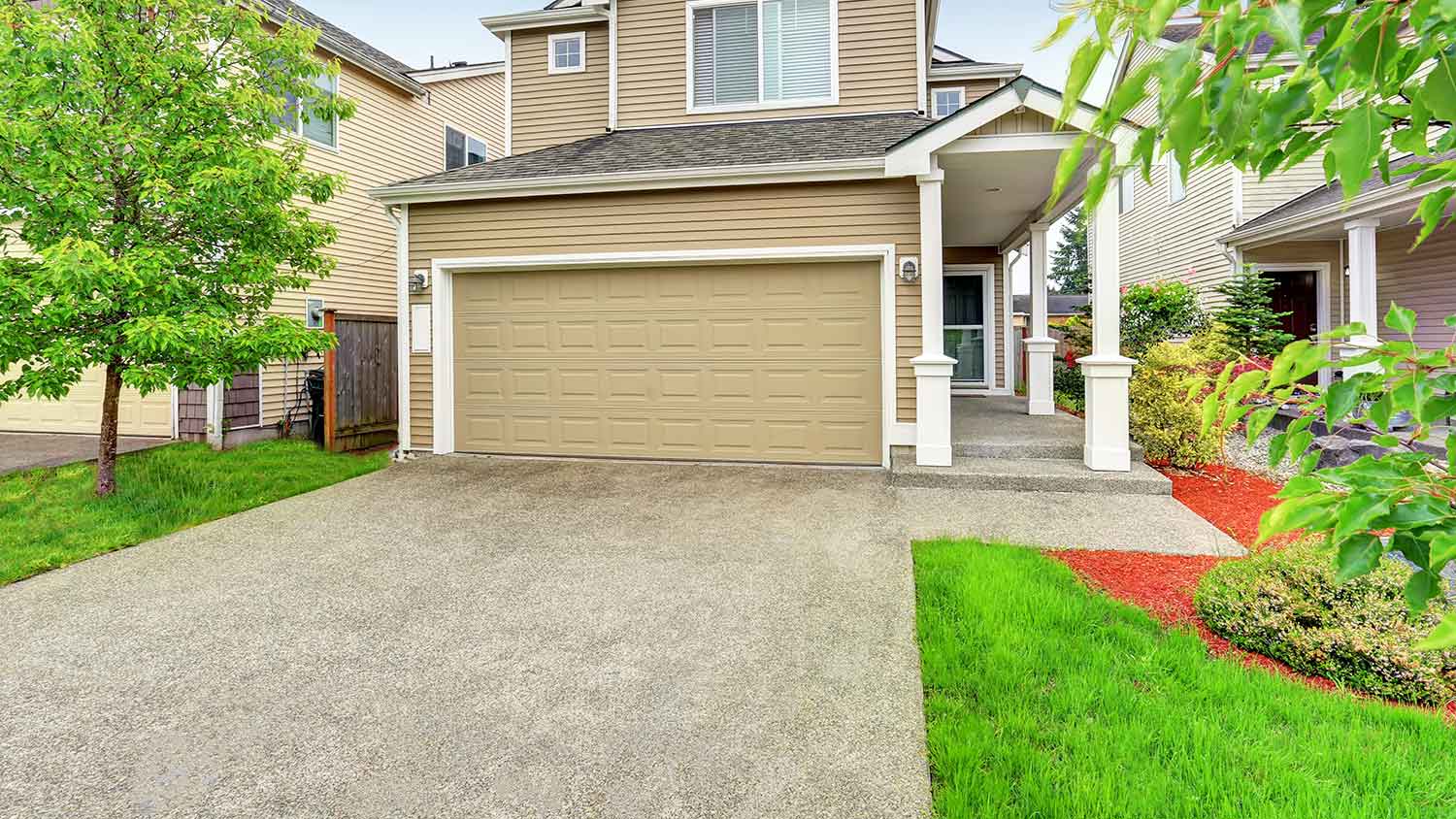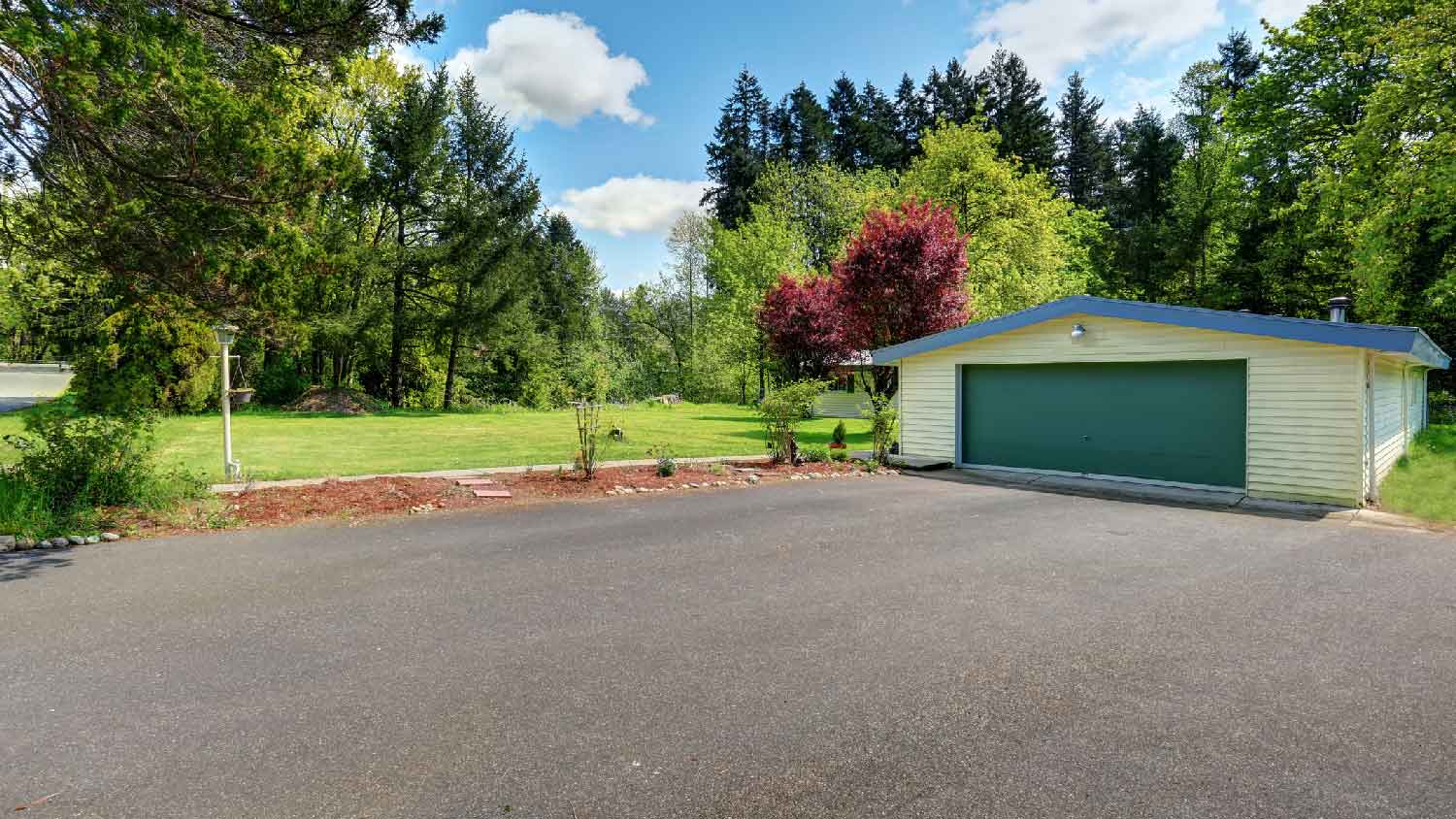
The cost of a tar and chip driveway falls between gravel and asphalt. Is this unique process the happy medium you've been looking for? Let's take a look.
The process may be easier and more affordable than you think


The cost to fix driveway cracks ranges from $0.50 to $3 per linear foot, but hiring a pro ensures the job is done correctly.
The main risk of fixing driveway cracks yourself is making the damage worse, which can weaken the surface and shorten the driveway’s lifespan.
If you incorrectly fix driveway cracks, they could come back.
Pros have the skills and experience to repair driveway cracks faster than DIYers.
For wide cracks or structural damage, you should bring in a local driveway repair pro.
Ever heard the age-old saying, “Step on a crack, you break your mother’s back?” Well, a busted driveway could spell ruin for your poor mom. Protect her—and the integrity and appearance of your driveway—and fix driveway cracks as they appear.
This guide provides step-by-step instructions for filling small hairline cracks and teaches you when it’s time to call in the pros.
While small cracks in your driveway may seem like a small nuisance, they can actually lead to much costlier and potentially dangerous issues if left untreated.
Over time, minor cracks can hold water, which, during freeze cycles, could expand and cause further damage. Cracks can also weaken the overall structure of your driveway and create tripping hazards (and potential lawsuits).
All in all, you can save time, money, and risk by fixing a crack before it becomes a more serious issue or requires paying the entire cost to pave your driveway.
Ideally, you should fix a crack as soon as you notice it. But if you see a crack in the heat of summer or dead of winter, wait until the weather gets milder and rain is in sight to prevent other issues that may impact the final product.
Small hairline cracks (about ¼ inch wide or less) can be quickly filled in minutes, as long as you have the tools on hand.
Before you hop in, make sure the crack is completely cleared of dust and debris. That includes small rocks, weeds, dirt, dust, previous filler—anything that could impact the filler’s ability to adhere to your driveway. Even a rogue leaf could spell disaster in this project.
You can clean the area using a small shovel or rake, pressure washer, or shop vac (preferably a combination of all three).

While driveway cracks are common, that doesn’t mean you should leave them. Smaller cracks can be easily filled with crack filler, but larger cracks require a bit more effort and expertise.
Cracks under about ¼ inches in width can be filled with concrete or asphalt crack fillers (depending on your driveway). These look and act like traditional caulk, like what you use in your kitchen or bathroom, so this DIY shouldn’t be too out of your wheelhouse if you’ve tackled projects around the house before.
Cut the tip of the crack filler tube at an angle.
Fill the crack almost to the top, leaving room to protect the area from foot or vehicle traffic damage.
Smooth the caulk using your finger dipped in soapy water.
Add sand if you want the caulk to match your driveway’s texture.
Let cure based on package instructions.
Cracks over about ¼ inches (and definitely over ½ inches) are considered large and may require professional support. A large crack can impact the integrity of your entire driveway foundation and be a sign of bigger issues, so it may be worthwhile to get an inspection before you start filling the crack to rule out any costlier problems.
To fill the crack yourself, buy the recommended filler for your driveway.
Asphalt driveways: Fill the crack with sand, dirt, or gravel, packing it in tightly.
Concrete driveways: Fill the crack with a concrete backer rod, pressing it into the grooves of the crack.
Once the crack is filled, top it with a layer of flexible crack filler (the same as for small cracks) for extra protection. For concrete, you can use a concrete patching compound instead, using a trowel to spread into place. A patching compound isn’t as flexible as the caulk filler, meaning it may crack again in the future—but depending on the size of your crack, it may be necessary to ensure a smooth finish.
There are a few things you can do to prevent driveway cracks.
Regularly seal your concrete driveway every three to five years, and your asphalt driveway every two to three to protect it against harsh weather.
Make sure you have proper drainage around your driveway, like a French or channel drain, to prevent standing water.
Be thoughtful about your surrounding landscaping, as roots can quickly grow wild and cause cracks to appear. A landscaper could help with this if you’re unsure.
Fix small cracks as soon as you notice them to prevent bigger cracks down the road.
Hire a pro to install expansion joints in your concrete to accommodate movement as needed.
Most experts recommend hiring a driveway repair professional to at least inspect a crack over ¼ inches wide. While you could repair this yourself, a pro can let you know if the issue is structural or requires more intensive support than you can handle on your own. That being said, small cracks can easily be repaired with a few tools and supplies you can find at your local hardware store.
So, as long as you stay on top of your cracks (without stepping on them to prevent your mother’s back from breaking) you should be able to maintain your driveway on your own for years to come. Considering the average asphalt driveway costs $5,250, it’s easy to see the ROI of spending about $20 at the hardware store to repair a small crack to prevent further issues.
From average costs to expert advice, get all the answers you need to get your job done.

The cost of a tar and chip driveway falls between gravel and asphalt. Is this unique process the happy medium you've been looking for? Let's take a look.

Use our guide to calculate the cost to seal an asphalt driveway. Prices vary based on the type of sealant and the size of the driveway.

The cost to build a road on your property can be high, but the utility is often worth it. Use this cost guide to see how much this project will cost.

Chip seal and asphalt are both common pavement options for roads and driveways. They are different in cost, application, durability, and appearance.

There are six types of gravel for driveways. This guide explains the pros and cons of each type so you can choose the best gravel for your driveway.

This article reveals the 6 most common types of asphalt cracks, their causes, and the best solutions to prevent further damage.